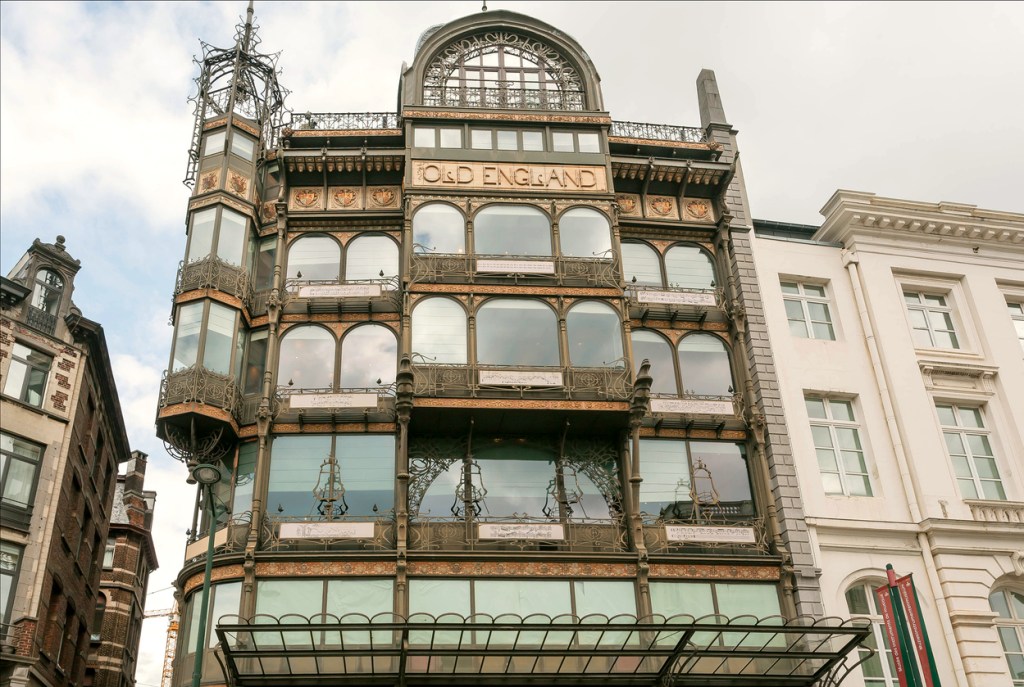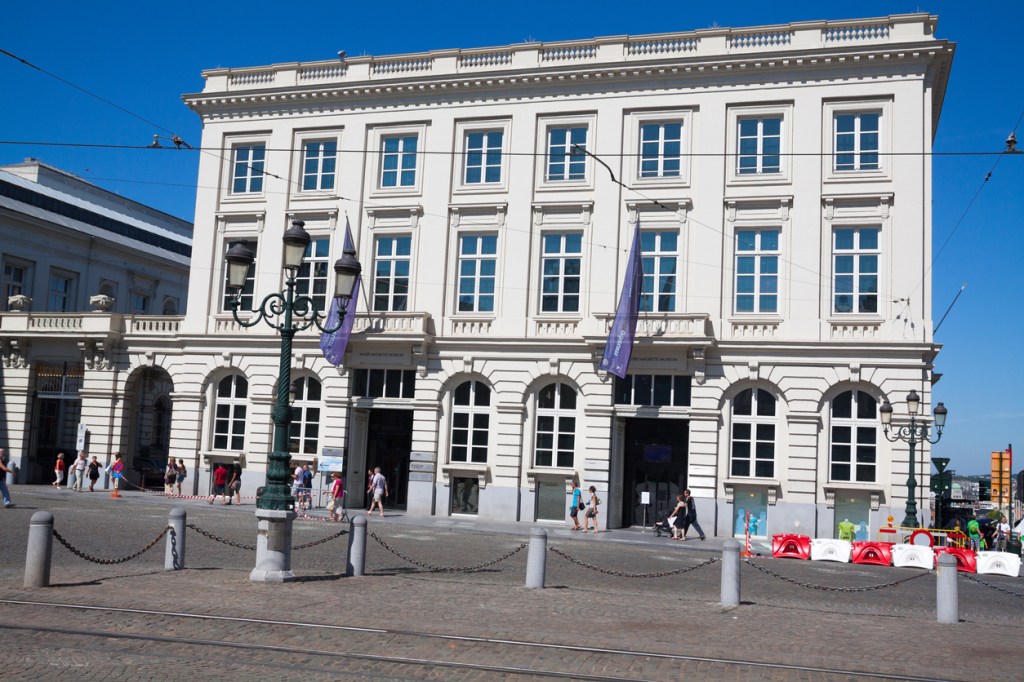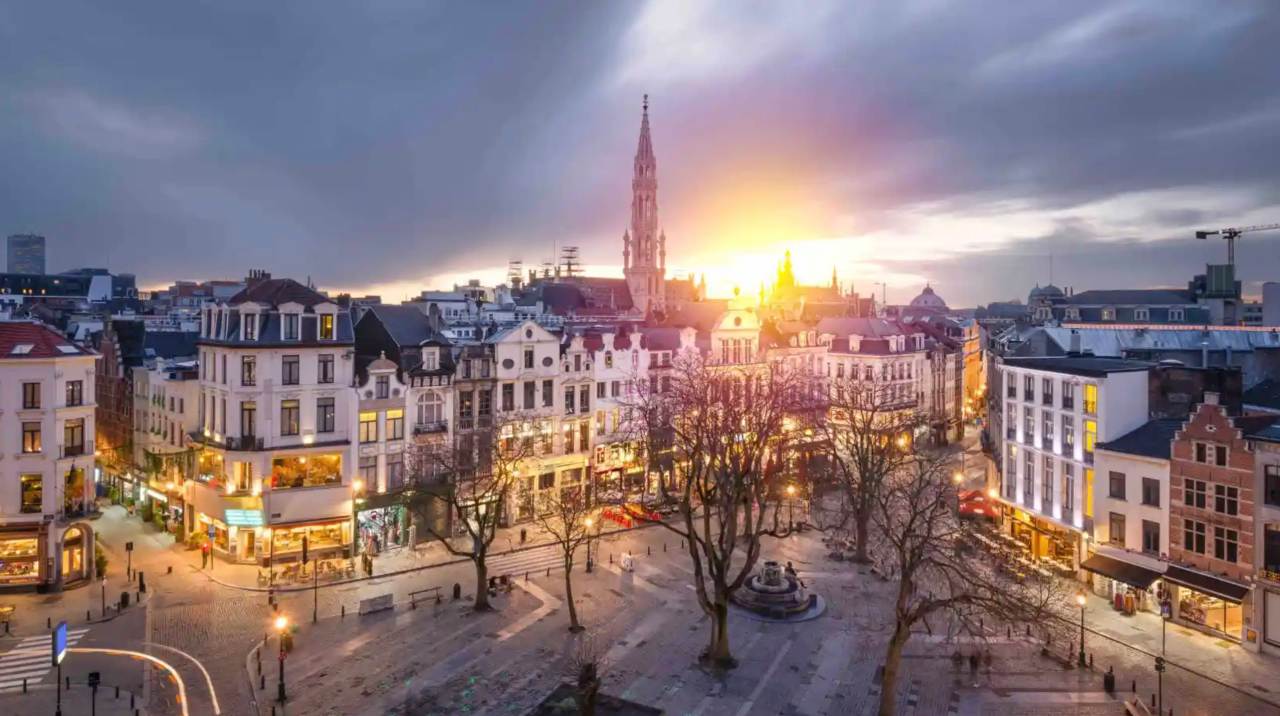Strolling around the Belgian Comic Strip Center, admiring the elegant artwork of Hergé (creator of Tintin), I wonder for the umpteenth time why so many of my British friends are so disparaging about Brussels.
It’s one of my favourite cities, but most Britons I know wouldn’t dream of planning a break here. They don’t know what they’re missing. I’ve been here countless times, yet on each visit I discover something new. It’s full of quirky shops and exquisite restaurants, and there are some excellent museums too. If your idea of fun (like mine) is nosing around art galleries and antique shops, with plenty of pitstops en route, you’ll have a terrific time. I’ve never eaten better than in Brussels – and the beer (and the coffee) is superb.
So why does this place have such a bad reputation back in Blighty? Mainly because it’s become a byword for Britain’s endless squabbles with the EU. However, for much of its history Brussels has been resolutely Anglophile. The UK had a big hand in the creation of Belgium, and during the 19th century Brussels forged close commercial links with London. There are ornate relics of this special relationship in those lovely Art Nouveau landmarks, the Old England department store and the Gresham Life Assurance building. And now, thanks to Eurostar, these kindred cities are only two hours apart.

I’ve been travelling from London to Brussels by train for more than 20 years, and it’s a journey I never tire of: no need to trek out to the airport; no need to cram all your luggage into one tiny carry-on case. On board, there’s plenty of room to stretch your legs. Yet this new proximity has been a mixed blessing. For British business travellers, Brussels has become a day-trip destination: the first train out, a slew of boring business meetings and the last train home again. It’s a city of nooks and crannies, rather than arresting vistas. You need to spend a few days here to allow the place to open up.
Even as an ardent Belgophile, I can understand why many Britons don’t warm to Brussels. A lot of the public spaces are pretty scruffy: traffic, litter, graffiti – all the familiar detritus of a big city – and its first impressions don’t flatter. Brussels Midi, where the Eurostar arrives, is a soulless place, and the area around the station is seedy. Your best bet is to hail a cab and head straight for the Grand Place.
The Grand Place is a tourist trap but there’s a reason why it’s so popular – it’s one of the most stunning baroque squares in Europe. The surrounding side streets are crowded with tacky souvenir shops, but if you venture a few blocks beyond here you’ll soon escape the coach parties. Outside the city centre, there aren’t so many sightseers, which is why the grub is so good.

Brussels is full of first-class restaurants, but there are three I’d really recommend. Comme chez Soi (two Michelin stars) has been here since the 1920s – Churchill and Roosevelt both ate here. The Art Nouveau décor is almost as enticing as the food. Villa Emily (one Michelin star) is smart but intimate, and though the menu is haute cuisine (I feasted on prawns, scallops, turbot and white chocolate – all divine), the ambience in this little hideaway is refreshingly relaxed.
For somewhere more informal, head for Lola, which serves classic Belgian dishes in a convivial setting on the Place du Grand Sablon. On the corner of this lively cobbled square is the flagship store of Pierre Marcolini, Brussels’s most stylish modern chocolatier. Wittamer, across the road, does wonderful pralines and macarons. For more traditional chocolates, visit Mary (founded in 1919). There are several outlets – my favourite is on the Rue Royale.
Apart from stuffing my face, the other thing I like doing in Brussels is trawling its gorgeous galleries. The Musées Royaux des Beaux-Arts de Belgique isn’t as spectacular as the Louvre but nor is it so busy. You can savour its treasures without elbowing your way through camera-clicking crowds. There are some delightful Bruegels here, and a wealth of haunting paintings by the Anglo-Belgian artist James Ensor. Around the corner is the Magritte Museum, devoted to Belgium’s most famous surrealist. Cloaked in darkness like a cinema, this atmospheric gallery presents his strange, seductive images in suitably dreamlike surroundings.

Alongside its municipal museums, Brussels has an abundance of commercial galleries, and at this time every year these galleries (and many more from further afield) come together at BRAFA, Brussels’s international art fair. I’ve gone along several times before and it’s always lots of fun. There are various events and talks, but the biggest treat is meandering through the huge exhibition hall, crammed with every kind of art, from cartoons to antiquities.
If I’m here on business, I usually stay at the Amigo, a Rocco Forte hotel in an ideal location just behind the Grand Place. Subdued and understated (I adore Olga Polizzi’s muted, restful colour schemes), it’s less grandiose than most grand hotels, but supremely comfy all the same. The bar serves Belgian staples such as grey shrimp croquettes and Belgian frites, double-fried in beef tallow. Sadly my pockets aren’t deep enough to pay my own way at the Amigo (rooms start from around £300), so if I’m here purely for pleasure I like to stay at Le Dixseptieme, a sedate townhouse a short walk from the Central Station which has doubles from £200.
Every time I come here, my diary is full of things to see and do, but I always enjoy Brussels best when I simply wander around. From Art Nouveau to Art Deco, from Brutalism to Belle Epoque, this mongrel city is a bizarre hotchpotch of building styles, and amid the high-rise eyesores are numerous architectural marvels. That’s the thing about Brussels – no one in their right mind would call it beautiful (indeed, large tracts of it are spectacularly ugly), but it’s never, ever dull. Don’t miss Bozar, Victor Horta’s modernist masterpiece (a thriving arts centre), and the Galeries Royales Saint-Hubert, one of the world’s oldest and loveliest covered arcades.
I finished my latest trip at the Musée Art & Histoire, where Hergé went to find inspiration for his Tintin stories. Although Tintin travelled all around the world, his creator rarely left Brussels. Instead of following in his hero’s footsteps, he came here to sketch the ethnological exhibits that feature in his globetrotting adventures. To me, it feels like a fitting metaphor for what I love about Brussels – so humdrum on the surface, so absurd and fantastical beneath.
BRAFA runs from 29 January to 5 February. Trains from London to Brussels via Eurostar from £78 return. Doubles at the Amigo from £385 per night. For more information about Brussels, see Visit Brussels.







Comments